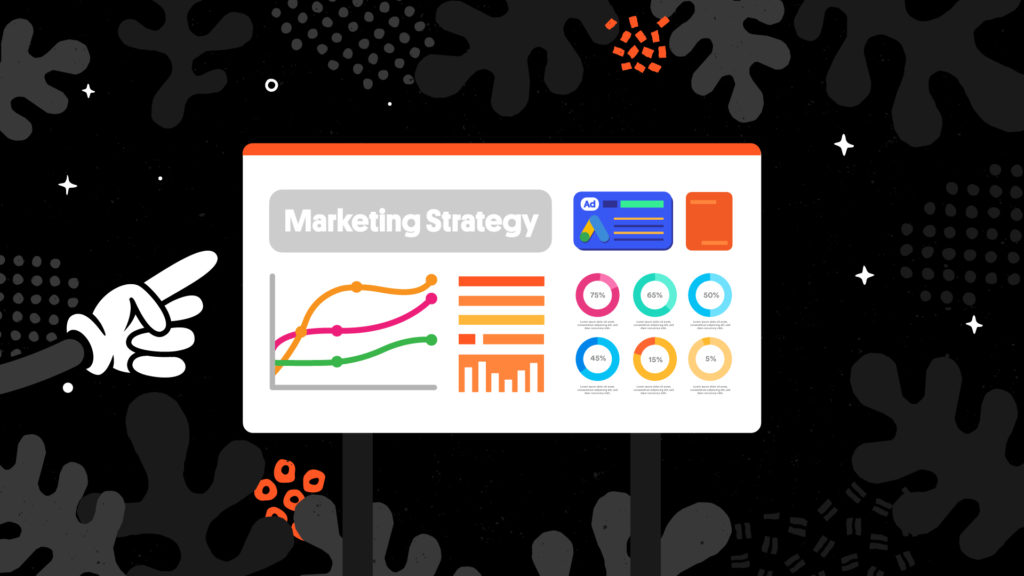As we head into the New Year, have you taken the time to consider your marketing strategy for 2023?
If you haven’t and are wondering how to go about making a 2023 Marketing Strategy and the supporting budget for your business. We’re going to help you.
Marketing Budget
How much are you planning to spend? If you want to promote your business, then a marketing strategy is a must – and a budget too. If this is your first rodeo, an industry standard is 10% of your gross annual revenue to be allocated into a marketing budget for the year.
Marketing Goals
Well, you probably want more customers. But… how? Are you looking to drive more website traffic? Convert sales online? Are you looking to increase repeat business? Get really clear about what you’re looking to achieve and then make sure your goals are SMART – Specific, Measurable, Attainable, Relevant and Time-bound. Once the goals are clear, then you can ensure every spend within the budget is tied to one of your targets.
Branding
Before you start pushing your brand out to customers, is it ready? It is imperative that your company looks consistent across all channels – social media, newsletters, emails, website, traditional adverts. You want to be clearly recognised, no matter where your brand appears.
The key to ensuring that your brand looks professional and consistent (and therefore trustworthy to your potential customer) is sticking to your brand guidelines. And if you don’t currently have any, now is the time to get some. It will mean that any member of your company, or agency, can pick up your guidelines and create content that is in line with your brand. It should include tone of voice, a primary and secondary colour palette, fonts that your company use and where and how your logo will feature on any artwork.
Many brands still exist without clear guidelines. Our creative team can whip you up an easy-to-use document that saves any confusion and means that your brand always looks polished, professional and trustworthy.
Website
If you are looking to increase your website traffic and conversions you will need to conduct an audit of your current website to make sure it is fit for purpose and will allow you to reach your marketing goals. You will need to look at:
- Website performance – Test how long content takes to load and the overall functionality of the website. Does the website take a while to load? Are you receiving error messages after trying to perform an action? All of these things can affect the experience of using your website and can negatively impact your SEO.
- Search engine optimisation (SEO) – Look into your position in the search rankings for keyphrases relevant to your business. Are you ranking below the top 10 results for important keywords? Studies suggest that most people don’t look past the first page when performing a search so it is important that you are appearing within at least the top 10 results. Your low rankings could be due to a poor site structure, slow page speed and lack of relevant content.
- Design and user experience – Analyse the overall user experience and design of the website to see how easy it is to navigate your website and find certain pages. If users find this difficult they will most often leave your website and look elsewhere. Good website design and user experience can help reduce bounce rates, increase your conversion rate and boost customer loyalty.
- Content management system (CMS) – How easy is it for you to access the back end of your website to make simple changes and upload new content? This is something all businesses should be able to do without the need for an external resource. If you can’t then you may be using the wrong content management system for you.
Blogging
Revisit your SMART objectives. If one of your goals was to increase traffic on your website, then content marketing is key – and blogging is a great way to drive traffic. Check out these stats from (https://www.ryrob.com/blogging-statistics/):
- Having a blog on your website can increase your search engine ranking by 434%
- Companies that published between 20 – 50 blog articles saw an increase in traffic of 30%
- Content marketing produces 3X more leads than paid search
- 60% of people are inspired to seek out a product after reading content about it
So, it is definitely worth including blogging within your marketing budget and strategy.
Video
Video isn’t just one piece of your overall marketing plan. It’s central to your outreach and campaign efforts, especially your social strategy. That’s why if you aren’t pushing out video within a competitive market, you’re likely to fall behind.
Video is one of, if not the most, versatile and engaging content formats you can use within your marketing strategy. It benefits the consumer by being easy to digest, entertaining and engaging which makes understanding your messaging much easier. It also benefits marketers, as it is easy to share across multiple channels (e.g. website, social, TV, YouTube etc.) and can also provide a huge return on investment.
Here are 5 stats that prove that you need to include video within your 2022 marketing strategy:
1.) 97% of marketers claim that videos help customers understand products (Hubspot)
2.) Live video will account for 13% of traffic by 2021. (Cisco)
3.) 90% of consumers claim a video will help them make a purchasing decision. (Social Media Today)
4.) One-third of online activity is spent watching video. (Word Stream)
5.) 72% of customers would rather learn about a product or service by way of video. (HubSpot)
Email Marketing
Not sure if you should be email marketing in 2022? Well, if your content is good, then you definitely should still be sending out email campaigns to your database.
Let’s check out some stats. According to PR daily:
- 81 percent of online shoppers who receive emails based on past shopping habits consider another purchase
- 72 percent of consumers prefer to receive promotional content through email than social media
So a well-planned, integrated email marketing strategy can be a very cost-effective way to reach your customers.
Social Media
It goes almost without saying how important social media is. Whether you like it or not, it is highly likely that even as an individual you are on at least two social networking sites yourself.
So, it is key that your brand communicates well across social media. That said, you don’t have to be on every social media site. It might be that your customers respond better on one platform than another. Consider the ages of your customers when planning where to post, and when to post – eg will a professional be more likely to be on Snapchat or Linkedin? And, will they be likely to pick up social ads at 4.30pm, or 3am?
The algorithms are ever-changing. This means that often your wonderful organic social media posts are not seen as much as they should be (or had been a couple of years ago). So, now it is time to plan some paid campaigns across social media – which will increase your visibility on social. You can still get away with a relatively low ad budget as long as your campaigns are well-planned out.
Search Engine Marketing
As well as social advertising, it is worth considering Search Engine Marketing. Unsure what that is? Think about when individuals write keywords associated with your company into Google. You’d want to show up right? After all, that customer is actively seeking something that you offer, waving money at someone willing to take it. Make sure you show up when they’re ready to buy by integrating a very strong Digital Marketing strategy. Our SEM guide explains a bit more about what is and how to effectively use it for your business.
Digital Marketing data
Taking the time to review your website traffic, social media insights, Google Ads performance and both email open rates and click-throughs will provide much better direction than all the top industry research you can find.
What you need to consider here is how are people responding to the content you’re putting out. Is it working? What times are the best? What content is performing the best? How can you improve, move budget and increase ROI in other areas?
Analytics is the way that you can find out if your strategy is working – and if it isn’t.
Do you need help putting together a 2022 marketing strategy for your business to help achieve your business goals? Get in touch today for more information.







